Edward Lear is best known as the author of The Owl and the Pussy-cat and other delightful nonsense verses. But he was more than a poet. He made his living as an artist in watercolour and oils, capturing animals and birds and landscapes with delicate precision and vivacious colour.
He taught Queen Victoria to draw, confiding in a letter, with typical irreverence, that the monarch was a “dear and absolute duck”. He was also a gifted naturalist, a travel writer, and a composer who published 12 musical settings of his friend Tennyson’s poems. As a musician, a poet and a friend, Ireland was of great importance to him.
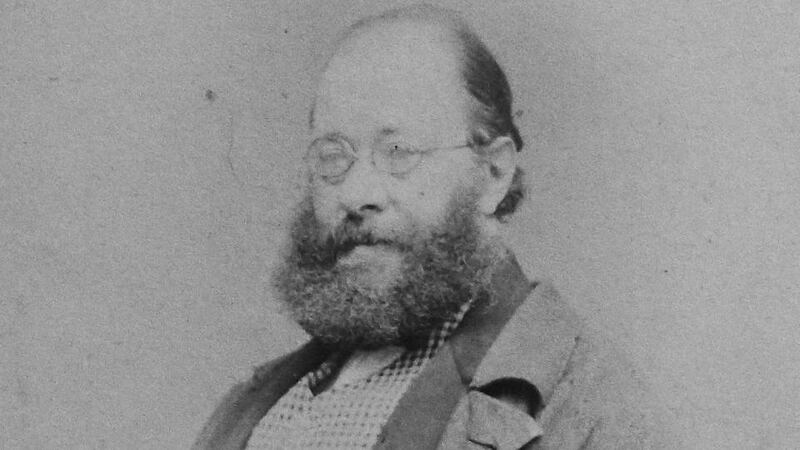
As a London-born teenager, Lear was already interested in Irish writing. He was an early reader of the Dublin University Magazine, which published its first issue in January 1833. We know because he produced a spoof of a poem in the February number, turning its wistful nostalgia into Cockney comedy. His diaries also tell us that he met the lawyer and political reformer, Daniel O’Connell, before 1830, though tantalisingly we don’t know where or why.
In August 1835, Lear set off for Dublin. He stayed at 20 Dame Street. He was due to attend an important meeting, of the British Association for the Advancement of Science. This group of amateurs and professionals had, only four years before, proposed a new word for people who specialised in studying phenomena in the natural world: “scientist”. Lear was an artist. But as a painter who spent his days with rare parrots, monkeys and creatures such as the “whiskered yarke”, scrutinising their anatomy, their behaviour and character in order to produce accurate drawings that were used to identify new species, he was a scientist too.
In Dublin, he met Charles Babbage, inventor of the computer, and Adam Sedgewick, father of modern geology, who was devising new names for rocks millions of years older than the Earth had once been assumed to be. Charles Darwin, Sedgewick’s protégé, would have been at the Dublin meeting if he hadn’t been on his Beagle voyage. We know that Darwin later consulted Lear’s natural history drawings.
Lear’s “nonsense” creatures, like The Scroobious Pip and the Quangle Wangle (he even drew an Owly-Pussey-catte that was owl above the waist and cat below it) were created in a climate where scientists were inventing taxonomy and thinking about the relationship between birds, beast, fish and men. Was it possible, looking at fossil evidence, to see that they derived from common ancestors?
The delegates at the Dublin conference were met at Kingstown by a committee of reception, who conveyed them to town in a special train. Dr Dionysius Lardner gave a lecture on steam carriages and exhibited a very elegant model of a stationary engine, employed in drawing a train of carriages on a circular railway. There was a lunch at the Zoological Gardens between the great conservatory and the ostrich house. No doubt Lear had a wonderful time.
Later on this Irish trip Lear journeyed to the Wicklow mountains, where he produced landscape sketches of “The Great and Little Sugar Loafs”. He met local gentry such as Lady Hatherton, who related a comic anecdote about shooting a cherub on Mount Ararat. With his friend, the controversial cleric AP Stanley, Lear was “popped into a hole” called “St Kiven’s bed” by an old Irish woman called Kathleen while a local tourist guide recited Thomas Moore’s Glendalough.
This mildly embarrassing Irish experience was inspirational for Lear, who transformed it into nonsense. On his return home, Lear produced a cartoon version of Moore’s By that Lake Whose Gloomy Shore, where Gentle Kathleen is pictured as a hefty older woman. St Kiven, a weedy, terrified saint, is running away from her. In Lear’s nonsense, women tend to be more assertive and male characters are often on the back foot.
Influence
Thomas Moore – the great Irish lyricist of the early 19th century – was the most important influence on Lear as a poet-songwriter. Lear met him in 1846, at the publisher Longman’s in London. But he already knew Moore’s Irish melodies by heart and would continue to play them on the piano, to sing them and to riff on them for the rest of his life.
Indeed, Lear internalises Moore’s lines so completely that in his own diaries they often form a kind of secret code. For example, when he is thinking about a young man, Hubert Congreve, for whom he felt complex affection, Lear just writes “I cannot weave as once I wove.” Once we know that he is quoting Sappho at her Loom from Moore’s Evenings in Greece, his true feeling becomes apparent. The song goes on: “So wildered is my heart and brain /With thinking of that youth I love!”
Lear learned a huge amount from Moore. The infectious lyricism of Lear’s own lines, which so often make use of sea journeys and a narrative of loss or exile, is indebted to Moore’s catchy and self-consciously emotional verses.
Lear also realised the comic potential of over-egging the pudding of Moore’s sweeter syllablubbery. He drew unflattering caricatures of the characters in Rich and Rare were the Gems she Wore, making the heroine into an old bag with a big stick. And he liked to ham up the Tom-Moorey pathos of sentimental ballads. Lear’s nonsense songs, such as The Dong with a Luminous Nose brilliantly fuse the conventions of drawing-room ballad and comic song, consciously teetering on the edge between absurdity and pathos.
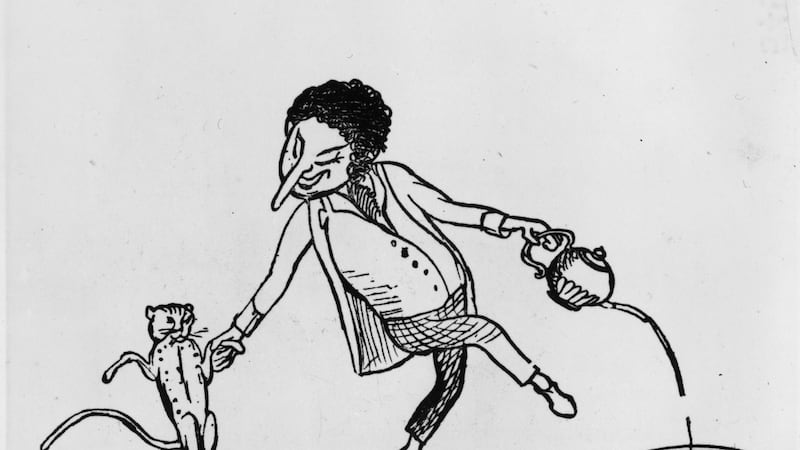
Lear also enjoyed hearing and playing other Irish songs, such as The Lament for Owen Roe O’Neill. This was an era of regional song-collecting, where Burns and Moore led a movement toward preserving traditional melodies. Lear likewise collected songs he heard in remote parts of Italy, in Corsica, and in Egypt, trying to set them down in his diaries for future inclusion in his published travelogues.
Lear visited Ireland again in 1857. This time he was there to spend time with the most important friend of his middle age: Chichester Fortescue. Lear’s exchange of letters with Fortescue, a Liberal Irish MP who would eventually become permanent secretary for Ireland under Gladstone’s government, is the best continuous record we have of Lear’s ideas.
He was a wonderfully entertaining correspondent with a naughty sense of humour. To Fortescue, Lear could in 1857 report that he had arrived safely in Dublin but had passed an uncomfortable ride there in the railway compartment with a very fat woman: “just exactly like a picture of Jonah’s whale I used to see when a child in a picture bible. I was horribly afraid she would eat me up and sat expecting an attack constantly till the arrival of the train relieved me from apprehension.” Lear accompanied this anecdote with a very unflattering caricature of the whale-woman.
Lear stayed with Fortescue at Red House, Ardee: a property that belonged to Fortescue’s aged but lively aunt. He remembered the holiday afterwards as perfect. They talked; they walked; they laughed a lot. This Irish visit – like the first – inspired nonsense.
Comic dialogue
Lear composed for Fortescue a comic dialogue he imagined between two calves that they were accustomed to feed by hand at Ardee. Characteristically of couples in Lear’s nonsense verse, this bovine pair have difficulty in getting it together. Although they belong to the same species, and (being dead) are meeting on one of the planets, they have grown up into very different creatures. One is a cow. The other is an ox.
The cow, like the Pussy-cat in The Owl and the Pussy-cat, proposes with striking assertiveness: “We are both old enough to marry now, so let us be married at once.” In vain, the ox tries to explain to his lady-love that he lacks the necessary wedding tackle to consummate their union:
Ist Quadruped: It is impossible I tell you! I cannot marry! I am an Ox!
2nd Quadruped: Heavens! What difference can a name make in so solemn a subject?
1st Quadruped: The difference is not in name, but in fact. If I had got, --
2nd Quadruped: Explain what? Or how?
1st Quadruped: I cannot, to a Lady. It would be a gross impropriety!
2nd Quadruped: You drive me mad! - Explain yourself!
The ox whispers in her ear, after which “A peal of lightning and a flash of thunder are heard. The female Mammal or Quadruped flies off into space: the male ditto lies down on his back and Frix (ie masturbates) for 8 years.”
This dialogue is much more sexually explicit than anything else we know that Lear wrote. It raises interesting questions about how the inter-species unions in his nonsense poems may reflect his own feelings about the difficulties in aligning sexual desire and sexual orientation.
Irish politics
Lear was fascinated by Irish politics, which he heard about from Fortescue at first hand. In 1869, his diary reports that he was reading speeches on the Irish Bill. In 1866, his neighbours in Malta suspected him of Fenianism. They were wrong; Lear was a Liberal Unionist. But he felt great sympathy with Irish distresses and was appalled by the money that parliament voted to alleviate them, which seemed never to suffice or to have reached those who needed it most.
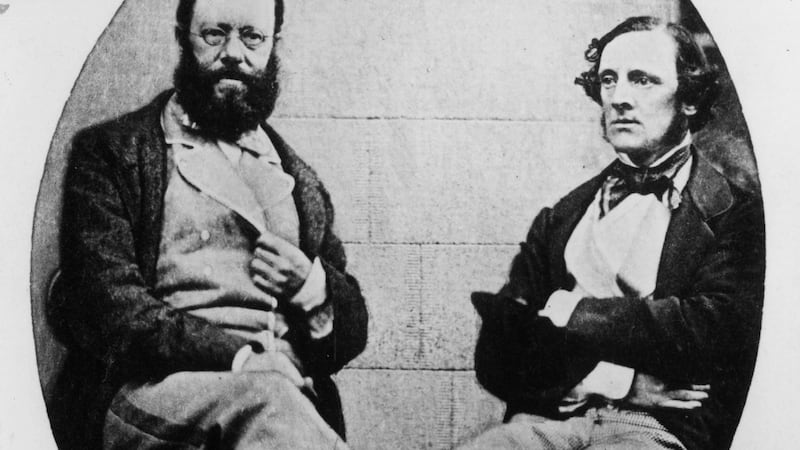
Of course, Lear is today associated with a verse-form called the limerick. Many of his limericks feature characters from Irish places. There is an Old Person of Dundalk, “who tried to teach fishes to walk”; an Old Man of Dunluce “who went out to sea on a goose”; and an Old Man of Kilkenny “who never had more than a penny”.
They form part of a long gallery of sympathetic eccentrics. Perhaps the most Irish is the “Old Man of Kildare/ Who climbed into a very high chair.” This “immoveable” man, smoking his pipe, announces “Here I stays, – till the end of my days”: a line we can hear in a distinctively Irish accent.
At the time when Lear wrote them, these illustrated verses were not known as limericks. Lear called these poems “nonsenses” or “Old Persons”. He didn’t invent the form (it was current in a few other collections of the 1820s), but he brought to it a wild inventiveness and pleasure in nonconformity.
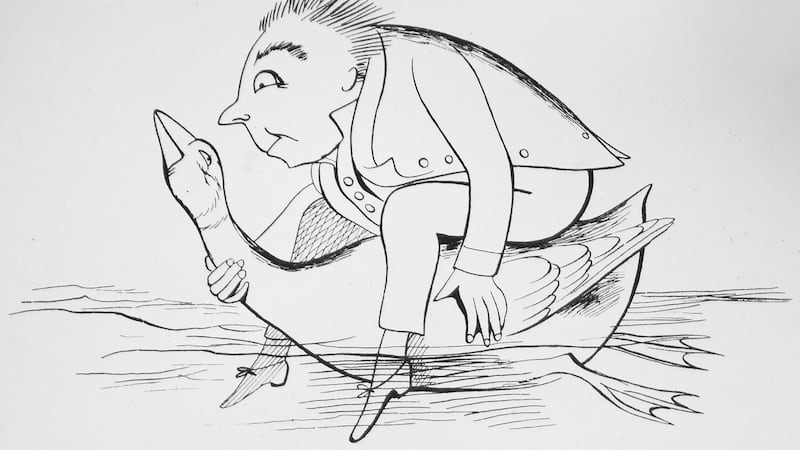
They became a way of “acting out” anti-social impulses. His pictures for them have the quality of pop-ups, as they leap energetically into view. By the 1880s, verses with this rhyme scheme seem to have become associated with another social, improvised mode of versifying, where participants closed with the refrain “Will you come up to Limerick?”
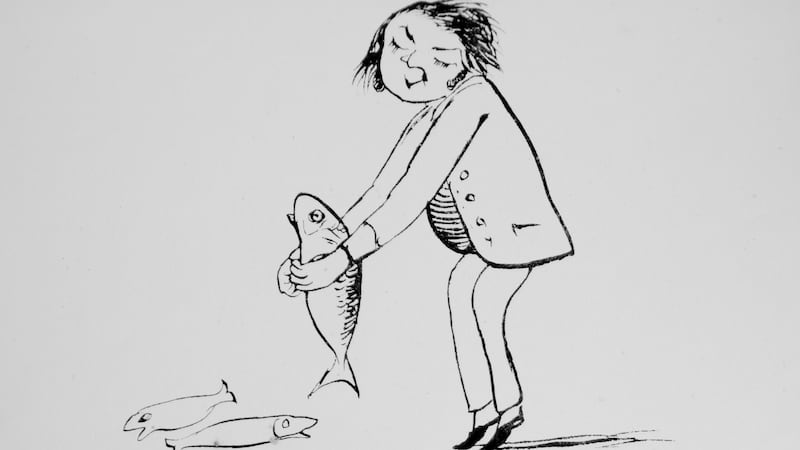
Although Lear thus only posthumously became “the limerick man”, there is a certain aptness in this poetic association. Lear belonged to a Victorian generation that was quite capable of perpetuating Irish stereotypes: the roguish seducer, the abandoned lover, the tyrannical father, the bog. Yet Lear also spoofs these conventions. His nonsense grows out of a negotiation between the plaintive music of Moore and his sentimentalism. Lear’s affection for and interest in Ireland, as a tourist and a friend of one of its most prominent politicians, shaped his later life.
His debt to Ireland – its poetry, its music, and its internal debate regarding Romantic perceptions of its own identity – is real and significant.










